Review for Memoria
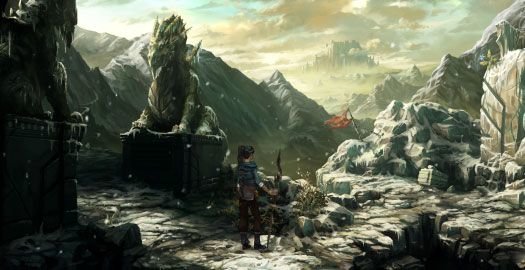
Daedalic Entertainment has garnered much respect these past few years. With numerous releases ranging in style but always maintaining a certain standard of quality, the German developer has justifiably become a driving force in the adventure genre. Their most recent release, Memoria, looks to expand on the events of 2012’s The Dark Eye: Chains of Satinav, offering players a second trip into the striking but unsettling, gloomy world of Aventuria. It's once again held back from greatness by awkward voice acting and hurried storytelling at times, but within the strange yet stunning fantastical settings, another dark story filled with personal sacrifice unfolds. And this time around the sequel expands on its predecessor's gameplay, including the use of new magic spells that impart a unique flavor on the experience.
Returning players partly reprise the role of the young bird-catcher Geron. A meeting with a travelling merchant named Fahi ignites Geron's search for answers to his one unending question: Will his beloved Nuri ever be the same after the dramatic events of their previous adventure? But Memoria's story is unique in its approach, telling a dual tale that spans centuries and hundreds of miles. On the opposite end, we’re introduced to Sadja, a seemingly cold, decisive, and hard-nosed princess from a much earlier time in the land of Fasar. Underneath her city lie ancient ruins said to contain the "Mask of Malakkar," an ancient artifact that will help her defeat the threatening demonic army of Borbarad. By Geron's time, the tale of Sadja simply recounts her disappearing suddenly, never to be heard from again, and in return for helping Nuri, Fahi charges Geron with solving a riddle that will reveal the truth behind the princess's fate.
In terms of story, Memoria is certainly more ambitious than Satinav, revealing bits and pieces of Sadja's own tale as Geron progresses in "present day." Geron is the vehicle for the telling of Sadja's personal journey, as he's granted the ability to witness the same events Fahi sees nightly in his dreams. The two-tiered story spans multiple settings, from the ruins underneath Fasar to a flying fortress. Geron revisits some familiar places, including the local marketplace and the Academy of Combat Magic, as well as new areas such as the Clothier’s district, the surrounding wilderness, and a surreal garden.
Each character has their share of obstacles to overcome. Geron must solve mysterious events in his home town: villagers being turned into stone pillars, the theft of a merchant’s gems, and the unnerving fate of the magic Academy’s headmaster make up some of the challenges he faces. He is constantly at the mercy of the mysterious entity responsible for acts of theft and murder, while Sadja is tested by a shady travelling companion and undermined by the adepts of the flying fortress Keshal Rhi. The warrior princess’s main goal is to serve in the holy army and make her mark in the history books, all the while a demonic army threatens the fate of her kingdom and its people.
While it's interesting to explore two such distinct storylines, there seems to be a tug-of-war between the tales of the two main characters, and the balance is sometimes tilted in favour of Sadja. I do like the concept of multiple characters separately yet cooperatively forming a whole story, but the flow from scene-to-scene is not always consistent, and at times all the mandatory switching back and forth denies the story the clarity of a single perspective. The seemingly disparate perspectives of Geron's and Sadja's stories do come together at the end, though Sadja's conclusion lacks much emotional impact.
The supporting cast in Memoria is memorable, but largely under-utilized. Returning from Satinav are the likes of the strange fairy scholar and the headmaster of the Academy. But many new characters are added as well, including Bryda, the prized novice of the Academy, and a magical wooden staff that accompanies Sadja on her journey. The variety and distinctiveness of these secondary personalities is welcome, but it's also what makes the quick entrance and exit of some of them somewhat disappointing. Daedalic has a knack for creating colorful characters, but in Memoria exposition often takes precedence over character development.
The protagonists themselves are hit-and-miss. Geron is slightly more believable this time around as a hero in love, but he's still somewhat lacking in conviction. Sadja is supposedly callous, but later events confused me when clashing interpretations emerged, her intended personality of a strong, motivated princess somewhat deflated by the conclusion of the game. By the end I felt like I'd lost sight of the character she was meant to be, buried among the many story elements requiring resolution. We’ve had one full game to learn about Geron and Nuri, but Sadja’s characterization is compromised here by the focus on multiple characters. By the end, I felt her personality had been redefined in a way that wasn't particularly justified by the story.
The bigger problem that hinders Memoria's characters is the unconvincing, awkward voice acting, which seems to be an issue with many localized Daedalic adventures. One of the first characters we meet, Fahi’s young daughter, sounds like she's simply reciting her lines, but other children are far worse – a particular disappointment considering Daedalic's own The Night of the Rabbit starred a strong voice actor in a youthful role. Geron’s original voice actor returns, but while he occasionally raises his voice, for the most part his performance is flat and disconnected. Fahi turns in one of the more authentic performances in a suitably Middle Eastern accent, but overall the cast suffers from a lack of voice direction.
Dialogues show characters fairly close-up at times, and the lip-sync animations are off as well. Some movements cut out, or don’t show at all. As I progressed I got used to it, and the highly detailed character drawings help atone for the jittery animation. Fortunately, the script itself works well for the most part, and I didn’t find the translation at all problematic.
The true strength of Daedalic games lies in their ability to present wonderfully diverse imagery. We’ve grown accustomed to high-detail, vibrant environments, and Memoria is no exception, from the earthy tones of a mountain meadow ripe with dense vegetation to a burning campfire against the purple hue of dusk. The distinct medieval-styled Bavarian town of Andergast stands in sharp contrast to the hints of ancient Arabia beneath Fasar. The lush artwork creates a sense of beautiful mystery, and the designers' ability to light hand-drawn artwork is mesmerizing. One scene in the very beginning is beautifully composed with bright oranges and yellows of a lit torch flickering against a range of deep blues signalling the encroaching darkness. Particles glint softly in the light of windows, and torches of green flame cast the surrounding area in a radiant light. Character design is equally detailed, such as Fahi's baggy, cuffed pants and intricately embellished blouse. As with the first game, the profound strength of the art and environments grabs you and never lets you go.
In comparison, background animations feel a bit shallow. Subtle things like a character’s visible breath are underwhelming in scenes that include cloudy skies and animals that could have really brought life to them. There is one scene in particular that nicely breaks from this limitation, as a group of novice mages at the Academy stand before a lecturer; among the crowd is someone taking notes and a few others rocking back and forth as the lecturer gestures to the audience. It's a shame that such occurrences of lively animation are so rare. I felt this game was a slight step backwards from its predecessor in this regard, with a lot more largely static interior spaces. Character movement is fluid enough, though the option to double-click to exit to a new area is a big help, as Sadja and Geron walk very slowly. Dramatic cutscenes pop up in a handful of specific sections, usually to move the story forward when more complex action is called for.
Memoria's music is eclectic, with an array of stringed instruments and percussion. Rather than endlessly repeating, much of it is limited to certain areas, like the specific track that plays only inside the magic Academy. There are also long stretches of time where no music plays at all. Perhaps I’m just used to music being more prominent in games, but it felt like the atmosphere was weakened by the lack of a consistent score. The majority of sound effects are basic ambient noises like the chirping of birds and the slight bustling of village people. What is here, both in music and effects, is certainly competent and effectively sets an appropriate atmosphere for the likes of a secluded village amongst a large forest or the vacuous, muffled sounds of an ancient ruin. But after the same limitations in Chains of Satinav, I was hoping that Daedalic would utilize audio more creatively this time out.
The game uses a simple right-click/left-click interface, but adds some modern refinements to offer aid. The need for pixel hunting is relieved by a hotspot indicator, which is sometimes useful when looking for small objects in the detailed artwork. Even with the indicator, there were times when I had trouble seeing the glimmer amidst certain background colors. Inventory puzzles are less frustrating thanks to the combo highlighter, which displays possible combinations when rolling inventory over usable on-screen items. A journal fills in as you progress, and seeing it populate with fantastic artwork, uncluttered by text, was a delight. I sometimes find myself skipping journals in adventure games, but Memoria encouraged me to revisit this one simply by doing something different, further accentuating the already impressive art.
Puzzles play a large part in this game, often dictating the pacing of the story. Memoria includes a variety of different puzzle types: magic spells, dialogue, inventory, and even environmental elements. One puzzle I had trouble with involved solving a riddle about the natural elements, costing me about two hours of frustrated experimentation due to how closely a couple of the elements were represented. There is one instance of a maze early on, which marks the only opportunity to use the puzzle skip feature. After an hour of useless wandering, I ended up skipping it. Although it annoyed me to require it, I do appreciate the inclusion of user-friendly features like this, preferring to be sucked in by story and atmosphere rather than halted by progress-killing obstacles.
A particular mechanic I really enjoy in this series is the use of magic spells, which enhance the depth of its puzzle scenarios. One such spell in this game is the “Send Vision” spell. Sadja is able to select from objects in a scene that bear meaning to a particular character, which allows her to persuade the spell's target. This requires more analytical thinking than usual, as hotspots take on a more impactful role. I kept hoping more of these types of puzzles would show up, but since it's limited only to certain scenes in Sadja’s story, it becomes very obvious when one must use the spell to move on. In the end, there’s a fair balance between plot advancement and puzzle-solving, but depending on your skill level, you could end up frustrated and disengaged by some of the tougher challenges. Most of the puzzles are very manageable, but the difficulty seemed to increase as I progressed; as with the first game, the sequel is by no means an easy jaunt.
With a satisfying but somewhat artificially-prolonged length of 15 hours (at least for me), Memoria successfully immerses you in not one but two different worlds of Aventuria. A colorful cast of characters helps create a sense of foreboding, but also of hope. It’s a game of remarkable contrasts, but one that sometimes struggles to maintain focus. Technical limitations hold the game back from greatness, but the artistic aspects and gameplay once again tease us with that potential. The improved magic spell system offers a clever approach to puzzle-solving (though it isn't utilized enough), and the sheer variety of environments and scenarios successfully creates the sense of a living, breathing world. It's a world that is not without its problems, for players as well as its dual protagonists, but Memoria is an epic journey that is certainly worth taking.
WHERE CAN I DOWNLOAD Memoria
Memoria is available at:
- GOG -90%
- HumbleBundle
- Amazon
Our Verdict:
Memoria is an alluring journey nestled in a beautiful setting, but lacks the character depth and narrative focus necessary for true greatness.


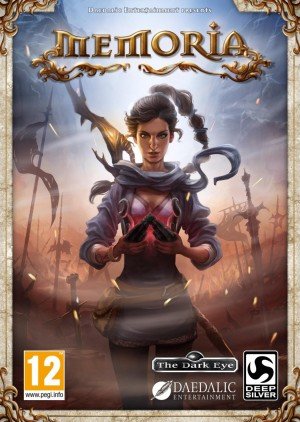
_capsule_fog__medium.png)







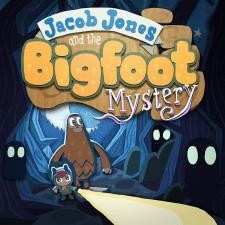
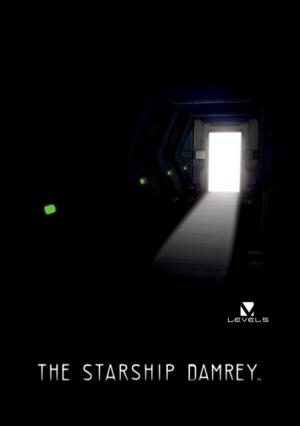
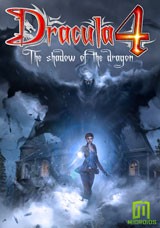

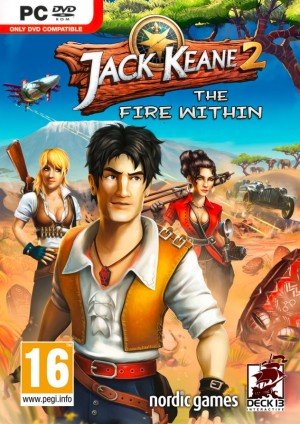


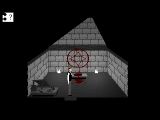






__small.jpg)



